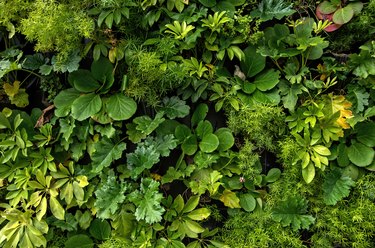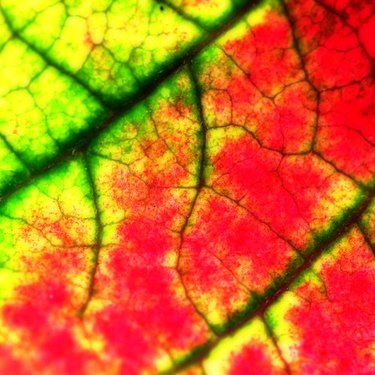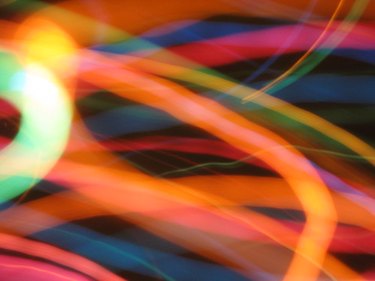
Plants use sunlight to make energy. The process by which they do this is called photosynthesis. Chlorophyll in the plant is the pigment that absorbs light. Light is made up of three different colors: red, blue and green. The reason that green plants appear that color is that they reflect that color in the light spectrum. In other words, the chlorophyll in the plant absorbs the red and blue light much more readily than the green light.
Red Vs. Green
Video of the Day

Experiments have been recorded showing the difference between plants grown under red and green lights, respectively. A simple demonstration of this was at the 2004 California State Fair, where Nichele R. Lee presented a project with the title: "What Color Light Helps Plants Grow?" The conclusion was that the red light grew the stronger plants, though it was noted that the green light had plants that germinated more quickly.
Video of the Day
Differences in Light Experiments with Plants at Different Stages
A study of the effects of red and green light on plants was conducted by Lewis H. Flint and Charles F. Moreland at Louisiana State University. The pair studied and compared plant growth with red and green lights, but specifically simple leaf development of intact and decapitated bean plants. Decapitating the bean plants reversed some of the effects the different colors of light were having on the plants.
Different Colors, Different Growth Benefits

Though green light has the least benefit to plants, red and blue light can have different but complementary effects on plant growth. The Arizona Master Gardener Manual, which was produced by the Cooperative Extension of the University of Arizona's College of Agriculture, discusses some of the effects. Blue light is helpful for growing leaves on plants. Red light, when mixed with blue, can assist with the flowering portion of a plant's growth.
Green Light Can Be Harmful

Professor Kevin Folta of the University of Florida has produced experiments in which plants' development, especially as seedlings, is actually harmed by green light. Specifically, he found that green light can reverse the stem growth in certain plants.
Green Light Stops Plant Progress
Daniel Mosquin, the education and technology manager for the University of British Columbia Botanical Garden and Centre for Plant Research, also gave as his opinion that green light, though it might not cause plants to actually die, will have detrimental effects because of the lack of photosynthesis that will result. The red and blue lights are the ones that produce the energy needed for photosynthesis and plant growth and development.